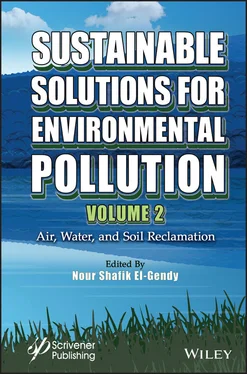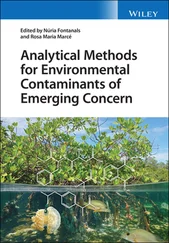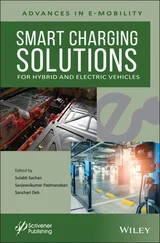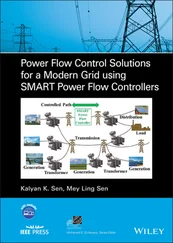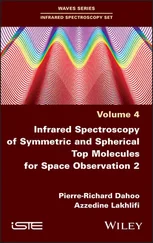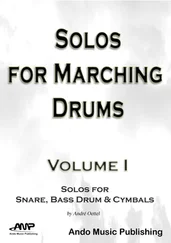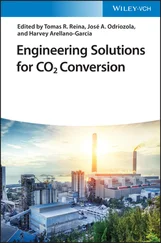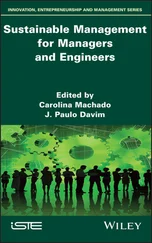Sustainable Solutions for Environmental Pollution, Volume 2
Здесь есть возможность читать онлайн «Sustainable Solutions for Environmental Pollution, Volume 2» — ознакомительный отрывок электронной книги совершенно бесплатно, а после прочтения отрывка купить полную версию. В некоторых случаях можно слушать аудио, скачать через торрент в формате fb2 и присутствует краткое содержание. Жанр: unrecognised, на английском языке. Описание произведения, (предисловие) а так же отзывы посетителей доступны на портале библиотеки ЛибКат.
- Название:Sustainable Solutions for Environmental Pollution, Volume 2
- Автор:
- Жанр:
- Год:неизвестен
- ISBN:нет данных
- Рейтинг книги:3 / 5. Голосов: 1
-
Избранное:Добавить в избранное
- Отзывы:
-
Ваша оценка:
- 60
- 1
- 2
- 3
- 4
- 5
Sustainable Solutions for Environmental Pollution, Volume 2: краткое содержание, описание и аннотация
Предлагаем к чтению аннотацию, описание, краткое содержание или предисловие (зависит от того, что написал сам автор книги «Sustainable Solutions for Environmental Pollution, Volume 2»). Если вы не нашли необходимую информацию о книге — напишите в комментариях, мы постараемся отыскать её.
This second volume in a broad, comprehensive two-volume set, “Sustainable Solutions for Environmental Pollution”, concentrates on air, water, and soil reclamation, some of the biggest challenges facing environmental engineers and scientists today.
AUDIENCE: Sustainable Solutions for Environmental Pollution,
Sustainable Solutions for Environmental Pollution, Volume 2 — читать онлайн ознакомительный отрывок
Ниже представлен текст книги, разбитый по страницам. Система сохранения места последней прочитанной страницы, позволяет с удобством читать онлайн бесплатно книгу «Sustainable Solutions for Environmental Pollution, Volume 2», без необходимости каждый раз заново искать на чём Вы остановились. Поставьте закладку, и сможете в любой момент перейти на страницу, на которой закончили чтение.
Интервал:
Закладка:
Mowing and harvesting aquatic plants at the end of the growing season allows exporting pollutants out of the waterbody. Otherwise, the biomass, enriched with metals during the growing season, will perish at the end of the season and decompose on site, releasing the metals trapped in the aquatic environment. It will thus participate in the over-contamination of the waterbody. As seen above, phytoremediation uses some slightly invasive species such as bulrush T. latifolia , common reed P. australis , water hyacinth E. crassipes , water lettuce P. stratiotes , or duckweeds Lemna spp. They have vigorous growth and produce more biomass than non-invasive ones. Also, after the harvesting of the biomass produced, a valorization can generate income and reduce the overall cost of the bioremediation system through the production of useful by-products such as compost or mulch for soil improvement or livestock feeding. Alternatively, if the contamination level is too high, then the production of non-food byproducts can be considered such as fuel (e.g., briquettes, biodiesel, ethanol, and biogas) for energy production or building materials (e.g., fiber board, insulating fibers, and chipboard).
In any case, the size of the system should be taken into account: what is possible on small CWs, in particular SSF-CWs, is much more difficult and expensive in shallow FSF-CWs covering several hectares.
1.10.9 Sediment Management
Sludge and sediment accumulated over time in CWs must be extracted regularly to maintain bioremediation efficiency: over time, their accumulation reduces the residence time and treatment capacity by filling the volume of deep basins. The monitoring of the performance of a CW, carried out over 7 years, showed a decrease in efficiency over time, linked to soil saturation. In fact, this CW saw its performance decrease after 2 to 3 years of operation, particularly in terms of purification performance for Kjeldahl nitrogen and P tot. Also, it is recommended to dredge the bottom at least every 5 years, in order to keep at minima the hydraulic operation in the CW, but also, at the same time, to extract non-biodegradable micro-pollutants such as phosphorus and metals, and to avoid the accumulation of OM leading to a reducing environment favorable to the production of GHGs. Shoreline restructuring can be carried out at this time to restore habitat diversity (Basilico et al. , 2017). Removing sediment already trapped in CWs uses a variety of mechanical techniques as excavation or dredging.
The low oxygen availability in wetland sediment is the main obstacle to the degradation of organic contaminants. To overcome oxygen limitation, a basic biostimulation technique consists in cultivating the sediment, either in situ , during a grazing transitional phase after drying-out: traditional practice of “assecs” or ex situ after spreading the dredged sediment in a thin layer to facilitate oxygenation, with optional nutrient additions (Ockenden et al. , 2014). Droughts of very high intensity (1 year in case of assec) kill any vegetative part of aquatic plants. Faced with such disturbances, the resilience of aquatic flora depends only on a persistent pool of seeds or natural seed inputs (Arthaud et al. , 2012). Finally, the assec technique shows a positive effect on the biodiversity of macrophytes and macroinvertebrates in the littoral and on oligochaetes in the center of the CW (Arthaud et al. , 2013).
The periodic regeneration of aquatic facies caused by the management of CWs seems positive on their biodiversity. In a network of nested wetlands, the specific biodiversity decreases over time after a disturbance for all CWs. However, there is a significant interaction with the location of the CW within the network. It does not seem to influence species richness during the first 2 years after disturbance, but from the third year and afterward, the CW linked to a high number of upstream CWs showed a constant decrease in richness, in contradiction with the idea of an increase in species richness due to increasing plant dispersal elements (diaspores) inputs from upstream (Arthaud et al. , 2013).
1.11 Animal Biodiversity
In addition of improving water quality and flood abatement, through appropriate management, CWs, especially large-scale FSF-CWs, can support a variety of wildlife species and thus enhance biodiversity. Also, they provide an opportunity for water and urban managers and other stakeholders to conserve and promote aquatic biodiversity in generally ecologically poor environments. Work of Hsu et al. (2011) suggest that the surface areas of the wetland and its macrophytes covert, as well as water quality play a major role on the biodiversity hosted by a CW. However, these factors are of varying weight according to the various taxonomic groups. Briefly, the richness, abundance, and diversity of birds increase with the CW area. Fish richness and abundance increase with CW area and dissolved oxygen, while diversity decreases with increasing P totconcentration. Aquatic macroinvertebrate richness and density increase with aquatic macrophyte cover, while diversity increases with CW area. Therefore, a CW, installed to improve water quality and enhance biodiversity, must have a large surface area and significant macrophyte coverage (Hsu et al. , 2011). Habitat diversity can be increased with the creation of floating islands (FT-CWs), resulting in an overall increase in edge habitat (Becerra-Jurado et al. , 2012).
1.11.1 Biodiversity Management
Without proper management, CWs can promote biological invasion or act as an “ecological trap” for native species, i.e., trapping them in poor-quality habitat, jeopardizing individuals or the local or regional population (Sievers et al. , 2018). Integrated basin-wide management and connection to natural wetlands can partially mitigate these negative impacts on the long-term biodiversity (Zhang et al. , 2020a).
In CWs, the existence of suitable habitat and predatory pressure are the two factors influencing aquatic macroinvertebrate community structure. Fish are often the main predators in CWs and have an influence on the richness, density, diversity, and structure of aquatic macroinvertebrate communities (Hsu et al. , 2011). Swans, ducks, and coots feed on aquatic vegetation: they can cause some damage, such as on floating mats.
The different factors can be actuated by proper management of CWs and can therefore be used to increase biodiversity. Among the environmental factors influencing CW biodiversity, connectivity is considered a key factor in the colonization by aquatic fauna. Indeed, the connectivity of CWs with other nearby lentic water bodies and their distribution in the landscape are at the heart of conservation strategies. Connecting CWs to the various water bodies isolated in the landscape by ecological corridors facilitates connectivity. In addition, for macroinvertebrates with low mobility such as gastropods, the introduction of sediment and vegetation samples from surrounding natural wetlands facilitates the colonization of new CWs by local flora and fauna species. In all cases, the introduction of invasive species should be avoided (Becerra-Jurado et al. , 2012). Increasing the heterogeneity or complexity of habitats and their age increases the biodiversity of CWs. In order to maintain the biodiversity, it is essential to maintain irregular depth profiles by adjusting water depth and controlling the macrophyte sprawling (Manzo et al. , 2020).
Although considered as low-maintenance systems, NBSs require minimal maintenance, such as monitoring the banks, and the quality of both the final effluent and the receiving water. Part of this monitoring can be easily carried out by local residents. In addition, the importance of the biodiversity of CWs for agricultural areas should be explained to farmers and local communities through educational programs (Becerra-Jurado et al. , 2012).
Читать дальшеИнтервал:
Закладка:
Похожие книги на «Sustainable Solutions for Environmental Pollution, Volume 2»
Представляем Вашему вниманию похожие книги на «Sustainable Solutions for Environmental Pollution, Volume 2» списком для выбора. Мы отобрали схожую по названию и смыслу литературу в надежде предоставить читателям больше вариантов отыскать новые, интересные, ещё непрочитанные произведения.
Обсуждение, отзывы о книге «Sustainable Solutions for Environmental Pollution, Volume 2» и просто собственные мнения читателей. Оставьте ваши комментарии, напишите, что Вы думаете о произведении, его смысле или главных героях. Укажите что конкретно понравилось, а что нет, и почему Вы так считаете.
